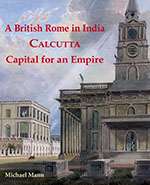In Gillian Tindall’s engaging book on Bombay, City of Gold (1982), she describes initial encounters with colonial buildings and her incredulous response: ‘Hallo! Fancy seeing you here?’. Indeed, colonial buildings may seem strange implants in the tropical landscape despite their historic presence for three centuries on Indian soil. Michael Mann argues for Calcutta that between 1770s and 1830s, the East India Company committed itself to a vision—that of building another Rome and set a trend. It fitted well with imperialist ambitions in the East and it projected a remarkable confidence also. Neo-classical buildings radiated power, stability, superiority. Its replication ensured continuity with European history. But neo-classical buildings needed artistic sensibility and investment; and the careful attention to detail and workmanship was indeed remarkable. They created new spatial enclaves, theatres of power, became receptacles for pageantry. Historians located in South Asia have usually focused on economic and political aspects of colonialism, debunking claims about benevolent rule. They have been sceptical, wary, even dismissive of its accoutrements. Spatial form and architecture are secondary in this view, a carapace, a top-up for naked colonial power. The rituals of the colonial state were nothing but self-indulgent fancy dress by a ruthless European elite (the extant statuary of portly Governor Generals in Roman dress does give this impression).
Mann offers a new and sober reading of the fancy dress, play-acting and buntings. In chapter five he argues that colonial buildings need to be seen in the context of state ritual, not as mere edifices showcasing architectural styles. According to him, these buildings created opportunities for endless display of power the ramifications of which ran wide. The dominated—Indian elites and subalterns—were awed and impressed but could not connect to the neo-classical vocabulary. Mann says bluntly what has been assumed all along, that European Calcutta took its shape the way it did because it was built primarily for the consumption of the European elite.

